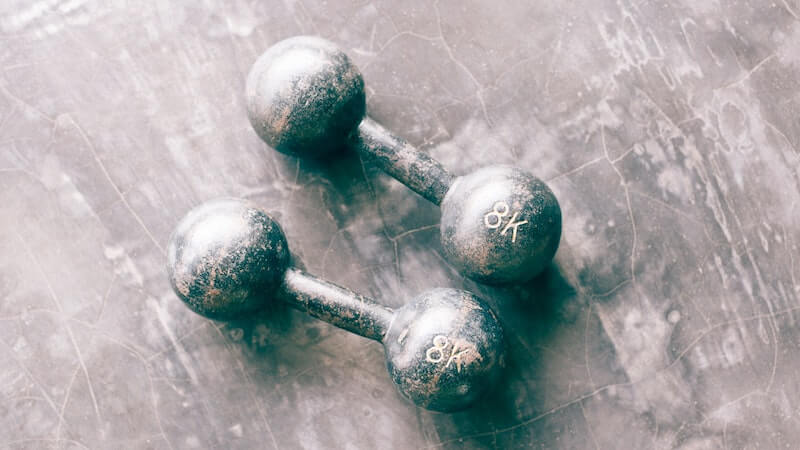Strategies for Continued Strength Gains
Episode #10 of the course Hack your workout: A self-paced system for core muscle and posture strength by John Robin
Welcome to Day 10 of our course!
As we close the course, we’re now ready to move to the final and most important unit: how to improve safely and sustainably over time.
We’ll go over each of the three parts of the workout and how to improve them safely, focusing mostly on muscle.
Building Muscle Safely: Strength Improvement Strategies
Before you can build strength by adding weight to your eight strength exercises, you must first reach foundation potential. This means you must build your way up to doing 30-40 reps of a given exercise, for all five sets.
Let’s use squats as an example.
For your first microcycle, let’s say that you start with just the barbell (45 lb.) and get these results:
• Set 1: 23 reps
• Set 2: 25 reps
• Set 3: 21 reps
• Set 4: 20 reps
• Set 5: 23 reps
Your first goal, to reach foundation potential, is to get up to 30-40 reps on all five sets.
Continuing our example, let’s say after five microcycles, finally, your squats look like this:
• Set 1: 33 reps
• Set 2: 34 reps
• Set 3: 36 reps
• Set 4: 31 reps
• Set 5: 33 reps
Congratulations! You’ve hit foundation potential. Now, this means in your next microcycle, you can move to the next level.
Stratification looks like this:
• Strata 1: endurance threshold, Set 1 at 50-70 reps
• Strata 2: foundation, Sets 2, 3, and 4 at 30-40 reps
• Strata 3: strength gain, Set 5 at 10-15 reps
You stratify your sets by adding appropriate weight to make the reps difficult enough that you can only do as many as the target range. Strata 1 is the easiest (lightest weight), Strata 2 is medium difficulty (heavier weight), and Strata 3 is the hardest (heaviest weight).
This three-part stratification lets you keep practicing proper form in your lighter, easiest first set, sustain foundation strength in Sets 2-4, and increase strength safely in the hardest fifth set.
Let’s continue using our example with the squats.
Let’s assume that this is your sixth microcycle of squats and you’re ready to begin stratification.
You add a 2.5-lb. plate to each side of the barbell for Sets 2-4, and a 25-lb. plate to each side for Set 5:
• Set 1, empty bar (45 lb.), 36 reps
• Set 2, 50 lb., 23 reps
• Set 3, 50 lb., 21 reps
• Set 4, 50 lb., 22 reps
• Set 5, 95 lb., 9 reps
Notice how this follows the stratification formula: Set 1 is the lightest, Sets 2-4 are at a heavier weight that stays the same each set, and Set 5 is at the heaviest weight.
Think of this stratification formula as a guideline for telling you when to increase the weights:
• Don’t increase the weight on Set 1 until you can do 50-70 reps.
• Don’t increase the weight on Sets 2-4 until you can keep your reps in the 30-40 range for all of them.
• Don’t increase the weight on Set 5 until you can do 10-15 reps at a given weight.
Microcycle after microcycle, you can study your progress and decide on when to make a weight increase on the current microcycle, using this stratification formula as a guide.
The example with squats works with any of the eight strength exercises. Just note that the weights will vary depending on the exercise. For example, you will take much longer to get up to 30-40 chin-ups at bodyweight than to get to 30-40 reps of bench presses with the 45-lb. bar.
Improving Cardio
At the end of our Cardio 101 lesson, I promised that I’d talk about the ideal 3:1:1 ratio for LISS, VO2 Max and HIIT and why this is important.
Notice right away that there are three kinds of cardio, just like there are three strata for strength. This isn’t a coincidence.
LISS works endurance, just like the first set endurance threshold.
VO2 Max develops your aerobic foundation, just like Sets 2-4 develop your strength foundation.
HIIT pushes your aerobic limits, just like the final set pushes your strength limits.
If you keep up the 3:1:1 ratio of training, this will give you a template to keep improving your cardiovascular endurance, analogous to how you keep improving your strength by the three-strata lifting strategy we just discussed.
Keeping Strong for Life
That’s it for our course. I hope that you learned a great deal and have taken all the notes that you need to start your own self-paced workout.
This workout is designed to keep you improving for life and maintaining that strength. There is no end goal except gaining more energy in your day-to-day life, feeling better, and moving more with ease.
Thank you for your time! I love hearing from my students, so if you have any questions or suggestions for future courses, email me at johnrobinrt@gmail.com.
Recommended reading
As you lift heavier on your fifth set, especially for deadlift and squats, you’ll want to get a weightlifting belt. Here’s a great article about it.
Other courses by John Robin
Share with friends

